QuestionQUESTION: 1. Species - Leopard Gecko; 5-7 months old; habitat size 4 ft by 1.5 ft by 1.5 ft; substrate ground walnuts; humid. ~20%; UVB tube light; temp 85-90 f; eats 3-5 meal worms or crickets every day or two; water dish changed daily but available 24 hrs; calcium powder on crickets; captive born; lives with three adult female Leopard Geckos.
Details of question: Moday evening this young guy jumped unexpectedly and fell 3 feet onto a tiled floor. We just moved to this state and it took a day to see a vet willing to check a lizard. An x-ray revealed a dark spot 2/3rds down his back. She said it was either a bruise or break, and recommended immobilizing him for two to four weeks. He has limited movement of his rear legs and diminished movement of his front left leg.
His last solid meal was Wednesday evening - two medium crickets. He's been drinking water, calcium supplemented water, vegetable and fruit juice since then, but has not defecated since Monday. Before the injury he used to go every day, but he would usually wiggle like a snake to work things out and he cannot move like that in his body cast. he looks miserable and we would like to know if we're doing more harm by keeping him immobile. Also, his bottom is turning purple in color between the legs.
The Vet we saw only works Wednesdays and we really don't want to wait that long for an answer if it's critical to the healing of our little friend. If you could either reassure us that his back will regenerate if it's broken without the body cast, or give us some insight into what to do to help him heal and purge his system we would really appreciate it. Thank you for your time.
Sincerely, Kevin Spears
ANSWER: So, it wasn't clear here but the vet placed him in a cast?
The x-ray should have been able to reveal a break if it was in tight enough, but mineralization in the spine of a gecko this young may not be complete enough to visualize on x-ray. It really is imperative to find a vet well versed in reptile medicine though, and not one who is just willing to see a reptile. There's a big difference. I counter the opinions of many a vet who don't know what they are talking about, and end up killing companion reptiles because they offer medical opinions on species they are in no way familiar with.
The dark spot could be a hemorrhage, it could be organ damage, evidence of inflammation around the spine. If you could forward those images I would like to see them for myself.
What you are describing in his reduced movement is called paresis. It's a bit less than paralysis, but if it isn't treated properly it could result in paralysis. If the vet did not place him on anti-inflammatories, then this was a big screw up in my opinion. If an injury like this is not treated quickly with anti-inflammatories, it often will lead to what might otherwise be a temporary paresis becoming a permanent paralysis.
My recommendation is (if nothing else for the sheer humaneness of offering pain management) to get him on some meloxicam (.1-.2mg/kg) or preferably a steroid anti-inflammatory such as prednisolone (2-5mg/kg) right away. All the while that inflammation is placing pressure on his nerve pathways, this is risking permanent damage and turning him into a cripple. Being young, he might still have a chance if the vet is competent and makes the right call. It sound's like there was a missed opportunity here though to make the right call.
Feed him only soft and watery foods for now (apple sauce, repti-aid formula, puree wax or mealworms, etc), and cease feeding if no defecation. If he's not defecating, you are only making things worse by filling up his gut. Add a SMALL drop of olive oil or mineral oil between feedings to try to help move things through the gut, as well as making sure there is plenty of hydration.
Contrary to what you may hear elsewhere, try to keep him off heat for now. Added warmth is typically called for in ill herps or to aid in clearing impaction, but in this case the heat will only contribute to the inflammation that could cripple him for life, especially if he is on no meds for inflammation. Don't allow him to get cold, but maintain him in an environment more so around the high 70s-low 80s for now. Remember, if he is immobilized, then he can't thermoregulate himself, and he can't tell you when he is getting too hot. This is actually a dangerous situation, and I fear that little things like this could cost his life if you aren't obsessive about being attentive to these little details and keeping him from overheating.
As to the initial cause of the injury, Leo Geckos aren't jumpers or climbers, so I will assume that he was being handled at the time. I will offer the advice that in my opinion these lizards should not be handled at all. A fall like this is often fatal to them, and it shouldn't be risked.
If there is possibility of a broken spine, then yes, immobilizing is the way to go. I would offer that it shouldn't take 2-4 weeks to tell whether that's the case though. I would watch the bruising and get him on the meds I mentioned ASAP!!! then see if his movement improves and the bruising reduces. If he regains mobility and strength in his limbs and the bruising and inflammation has subsided, then I would have another x-ray to try to make a better determination on whether there is really a fracture in the spine. This may be possible in as little as a week after he is on the right meds. For one this little the x-ray may be inconclusive though, especially if the vet isn't used to looking at radiographs of reptiles, but it could be very important to at least try, because if he doesn't actually have a broken spine, then yes...he needs to come out of that cast asap or his chances of pulling through go way down. His stress will build as he is not able to thermoregulate himself, feed himself, etc.
I recently had a couple year old female who was badly injured when the screen lid of the terrarium slid down on top of her and the corner fell right across her neck and shoulders. She experienced serious bruising, limb paresis, and a ruptured lung. I had to needle aspirate her chest to relive pressure so she could expand her good lung. I got her on prednisolone and antibiotics right away though, and after just a few days her inflammation subsided so that she regained strength and movement. A month later, she is now back to normal. The prognosis for your would be far worse if he does in fact have a broken spine, or he has to be in that body cast for an extended period, and without the proper medications as well.
And lastly...get him the hell out of that terrarium he shares with three other adult geckos! He needs his own housing for several reasons.
---------- FOLLOW-UP ----------
QUESTION: I appreciate your answer and concern - please let me clarify a little bit. Tuesday he was moved into a little five gallon terrarium to keep him better protected; he has clean paper towels now as a substrate. He's in a room with a constant temperature of 81 f, with a UVB lamp during the day. He has a half shell hidey bowl for personal privacy if he chooses. He has a small coffee can lid for a water dish which we keep filled so he doesn't have to strain to reach water and we have seen him soaking in it today. After reading your answer last night we decided to let him sleep the night in his splint setup and it was removed this morning. He seemed quite relieved when the splint was removed - the vet had taped it directly to his skin on both sides - and he seems to have regained some movement in all his legs. I can't see how to attach pictures to this, otherwise I'd send three x-rays, a picture of him in the splint and a picture today next to a ruler so you could gauge his size. He currently weighs 30 gm. The girls all seem to miss him so we would like to return him when it is safe to do so. We ordered the medications but they won't be in town until Wednesday. Thank you so much for the reassurance, if you'd like I'll let you know how he does.
AnswerA splint that was taped? Hmmm. Well, if inflammation was dealt with and bruising subsided. It maye have been too early to remove the splint though, but time will tell. When I splinted the broken femur of a Leopard Gecko I used VetBond surgical adhesive and it worked great, and came off with subsequent sheds. She was young and the leg healed.
You may post the images to my facebook wall @ facebook.com/reptilerescue (Wichita Falls Reptile Rescue), or find my email there.
What medications are on order?
I would keep him sequestered for some time. Perhaps a month, and depending on x-ray and his progress. The last thing he needs is to go back to trying to compete for space with a bunch of larger geckos, or to try to run a harem, even trying to mate, and breaking his spine.

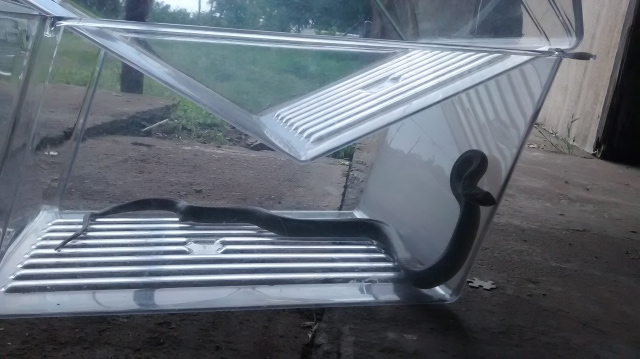 can not identify
Question
snake
We live in south central Oklahoma
can not identify
Question
snake
We live in south central Oklahoma
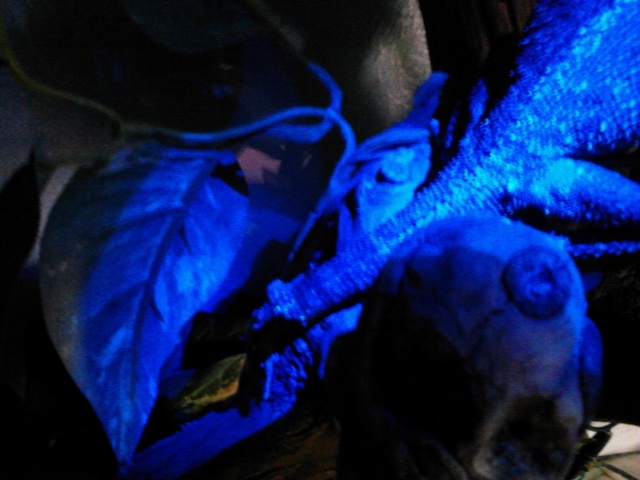 Broken Tail
Question
Broken Tail!
I have a female Mountain H
Broken Tail
Question
Broken Tail!
I have a female Mountain H
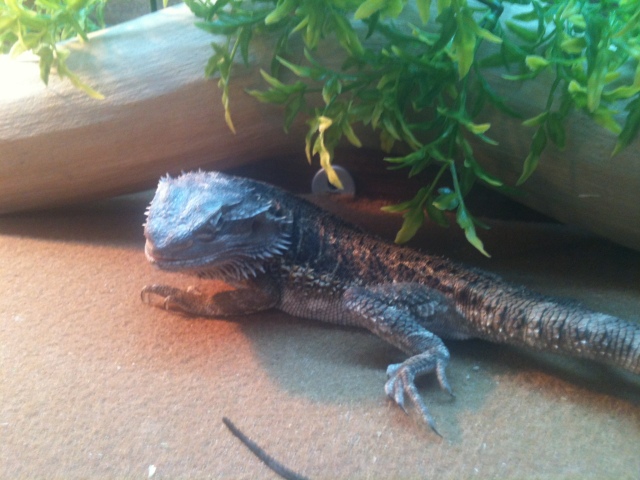 bearded dragon ill
Question
izzy
hi i have ordered a reptisun 10.0
bearded dragon ill
Question
izzy
hi i have ordered a reptisun 10.0
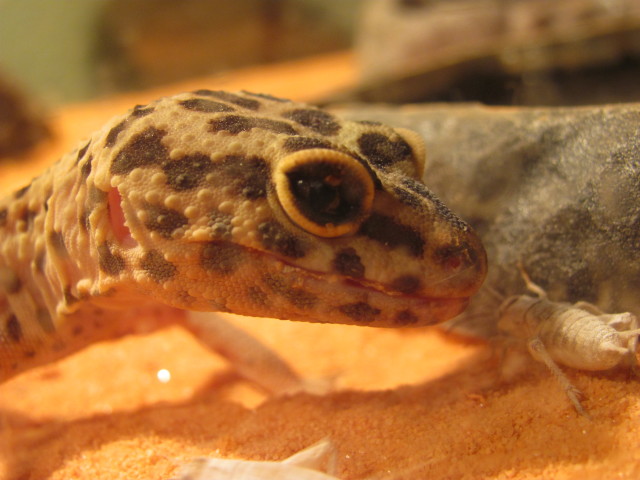 mouth issues
Questionigore
QUESTION: Hi its me again Haley. I
mouth issues
Questionigore
QUESTION: Hi its me again Haley. I
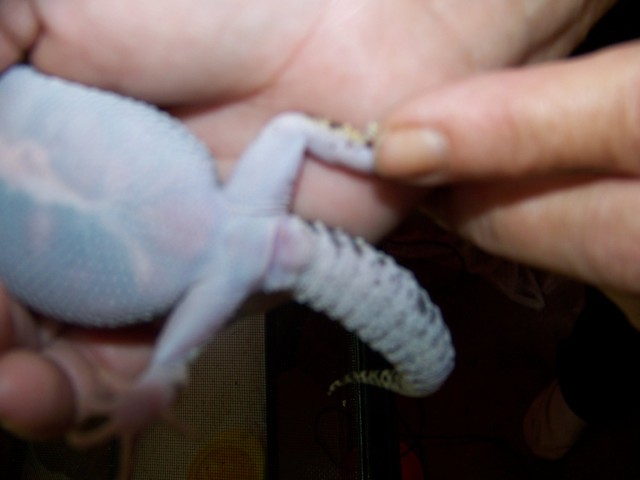 Lady is a 6 year old leopard gecko
Question
lady
Lady was pregnant for the first time jus
Lady is a 6 year old leopard gecko
Question
lady
Lady was pregnant for the first time jus